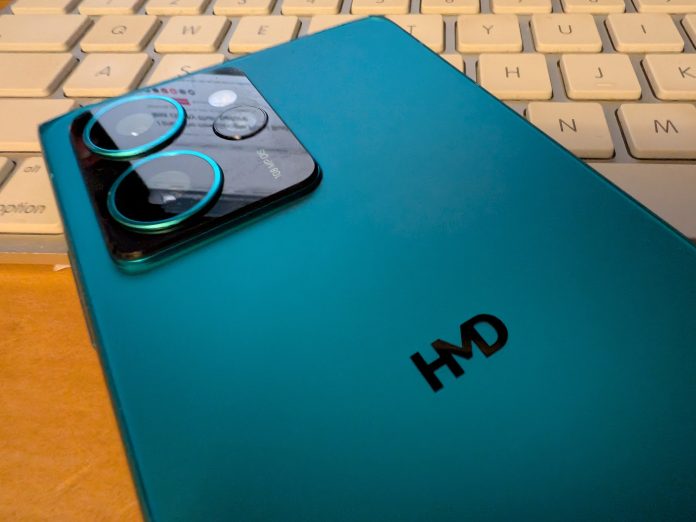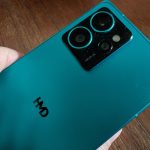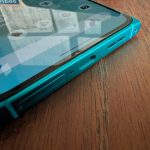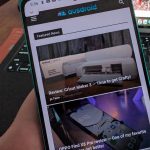The HMD Skyline distinguishes itself with a user-first approach to repairability, addressing a growing demand for sustainable technology. Recognising the frustrations many users face with expensive or complicated phone repairs, HMD Global has partnered with iFixit to provide tools, guides, and official replacement parts. This partnership enables Skyline owners to independently replace components like screens, back covers, and charging ports.
Replacement kits are available at competitive prices in Australia, with iFixit estimating costs between $30 and $150 AUD depending on the part. The repair process is made more accessible with step-by-step guides provided online, which cater even to those with minimal technical expertise. For instance, a typical screen replacement takes under an hour using the iFixit kit, which includes all necessary tools.
The move aligns with global trends prioritising right-to-repair initiatives and is particularly valuable for Australian consumers, where repair services often come with high labour fees. By empowering users to perform repairs at home, the Skyline not only reduces costs but also extends the device’s lifespan, contributing to environmental sustainability. This feature is a standout in its $899 AUD price bracket, making the Skyline an appealing choice for those seeking both innovation and practicality.
What is it?
The HMD Skyline, priced at $899 AUD, is a feature-rich smartphone with a strong case in the competitive mid-range market. Designed with both style and substance, it combines a vibrant, high-resolution display, powerful hardware, and repair-friendly construction. The 6.55-inch pOLED display is a visual treat, offering a refresh rate of 144Hz for smooth performance across gaming, video playback, and everyday navigation. The device is water and dust-resistant, rated at IP54, and comes in eye-catching colours like Neon Pink, Topaz Blue, and Twisted Black, making it appealing to both function- and fashion-conscious users.
Under the hood, the Skyline is powered by the Qualcomm Snapdragon 7s Gen 2 processor. Paired with up to 12GB of RAM and 256GB of internal storage, the phone promises seamless multitasking and robust app performance. For users who need additional space, storage is expandable via microSD. Battery life is another strength, delivering a consistent 36 hours or more thanks to a 4600mAh capacity that supports 33W wired charging alongside the innovative Qi 2 wireless charging standard. This new magnetic alignment technology enhances efficiency and ease of use, while reverse wireless charging lets you power up accessories on the go.
The Camera: A happy snappers happy place
Photography enthusiasts will find much to like in the Skyline’s camera system. The rear setup features a 108MP primary lens, a 50MP telephoto lens, and a 13MP ultrawide lens, offering flexibility for different shooting scenarios. The AI-assisted zoom and portrait modes enhance clarity and artistic flair in photos. Meanwhile, the front-facing 50MP camera ensures sharp, high-quality selfies and vlogging footage, complemented by gesture controls for easier operation.
Some phones will produce better results in comparable price ranges; however, as a longer-term investment, considering the repairability of the Skyline, it’s advantage to HMD.
You don’t need a feature phone to go on a Digital Detox
One of the most distinctive features of the HMD Skyline is its Digital Detox Mode, which highlights the brand’s commitment to promoting healthier relationships with technology. This mode, set to launch via a software update after the phone’s release, allows users to step back from constant screen engagement. It will enable personalised settings to limit screen time and encourage users to focus on real-world interactions and activities. This thoughtful addition caters to a growing demand for mindfulness in technology use, aiming to position the Skyline as more than just a device but as a lifestyle companion.
My final thoughts…
As with any phone, there are a few pros and cons to consider. The design is gorgeous; it’s easily (and quite cheaply) repairable, and it has really good battery life with a feature and connectivity set that you can reasonably expect from a sub-$1,000.00 phone in the current market. The downside is that the performance can lack a little when you need the processor grunt (which is a reality of cheaper devices), and there are only a couple of years of guaranteed OS updates.
At the end of the testing period, I was disappointed to be packing up the Skyline to send it back. The combination of innovation, sustainability, and a focus on user well-being makes it a compelling choice in its price segment. While it’s not necessarily going to hit the mark for everyone, this is one of the best phones, possibly the best value phone under $900.00 and worth checking out if you’re shopping on a budget.
It is available in Australia through major retailers such as JB Hi-Fi, Harvey Norman and Amazon.














